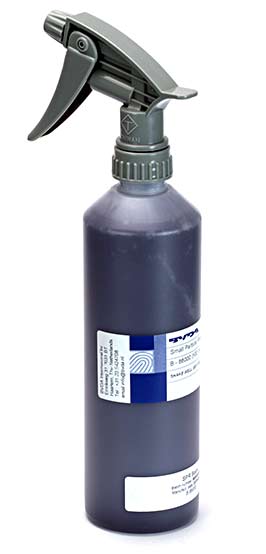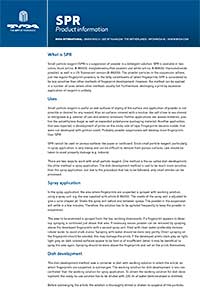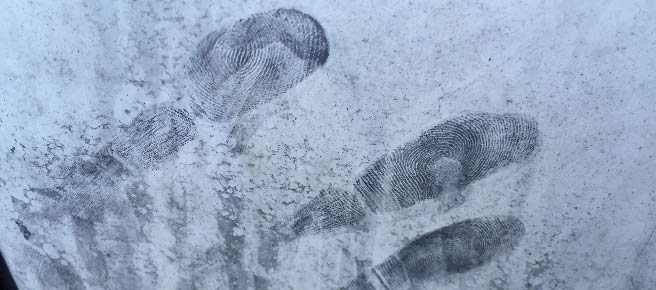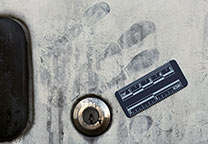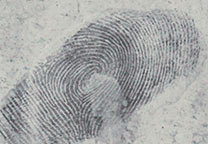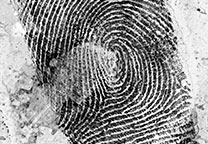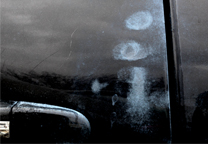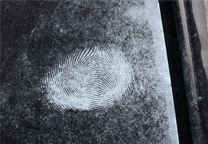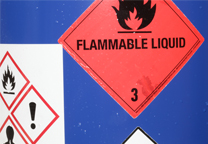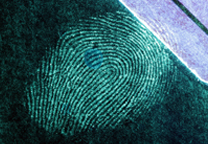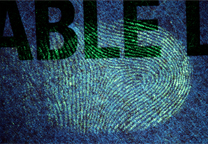What is SPR
Small particle reagent (SPR) is a suspension of powder in a detergent solution. SPR is available in two colors, black (art.no. B-86000, molybdenedisulfide powder) and white (art.no. B-86600, titaniumdioxide powder); as well in a UV fluorescent version (B-86200). The powder particles in the suspension adhere, just like regular fingerprint powders, to the fatty constituents of latent fingerprints. SPR is considered to be less sensitive than other methods of fingerprint development. However, the method can be applied in a number of cases where other methods usually fail.
Furthermore, destroying a print by excessive application of reagent is unlikely.
Uses
Small particle reagent is useful on wet surfaces (if drying of the surface and application of powder is not possible or desired for any reason). Also on surfaces covered with a residue, like salt (close to sea shores) or dirt/grease (e.g. exterior of cars and exterior windows). Further applications are: waxed materials, plastics like polyethylene (bags) as well as expanded polystyrene (packaging material). Another application, that was reported, is development of prints on the sticky side of tape. Fingerprints became visible, that were not developed with gentian violet. Probably powder suspensions will develop more fingerprints than SPR!
SPR cannot be used on porous surfaces like paper or cardboard. Since small particle reagent, particularly in spray application, is very messy and can be difficult to remove from porous surfaces, care should be taken to avoid property damage (e.g. indoors).
There are two ways to work with small particle reagent. One method is the so–called dish development, the other method is spray application. The dish development method is said to be much more sensitive than the spray application, but due to the procedure that has to be followed, only small articles can be processed.
Spray application
In the spray application, the area where fingerprints are suspected is sprayed with working solution, using a spray unit, e.g. the one supplied with article B-86000. The nozzle of the spray unit is adjusted to give a cone-shaped jet. Shake the spray unit before and between sprays. The powder in the suspension will settle in a few minutes. Therefore, the solution has to be agitated frequently to keep the powder in suspension.
The area to be examined is sprayed from the top, working downwards. If a fingerprint appears to develop, spraying is continued just above that area. If necessary, excess powder can be removed by spraying above the developed fingerprints with a second spray unit, filled with clean water (preferably demineralized water, to avoid chalk stains). Spraying with water should be done very gently. Direct spraying on the fingerprint should be avoided, this may damage the prints. If the developed prints (dark grey on light, light grey on dark colored surfaces) appear to be faint or of insufficient detail, it may be beneficial to spray the area again. Spraying should be done above the fingerprints and not on the prints themselves.
Dish development
The dish development method uses a container or dish with working solution in which the article, on which fingerprints are suspected, is submerged. The working solution for dish development is less concentrated than the working solution for spray application. To obtain the working solution for dish development, the ready-to-use solution has to be diluted with 220 ml of water (demineralized or distilled).
Before submerging the article, the solution is thoroughly stirred or shaken to suspend all the particles. After that the article is immersed, left in the solution for circa half a minute and then removed. Do not agitate the solution while in the container. Many articles will have to be immersed twice, once for each side. The deposit, left on the article, then is carefully rinsed with water by submerging it in a dish or container (of equal size as the one with SPR) with clear water and slight agitation of the article.
Lifting and photographing
Before lifting, the prints should be allowed to dry. Forced drying, e.g. with a blow dryer, should be done with great care. The molybdene disulfide powder from black SPR moves easily, so if the air stream is too powerful false ridges can be created. The ease with which the powder flows, makes it necessary to be extra careful in lifting. Prints are easily damaged. Therefore, photographing before lifting is recommended in important cases or if lifting is done from difficult surfaces.
Prints can be lifted, once dry, with black Gellifters. Prints developed with black SPR can also be lifted with black lifters. They can be photographed due to the shiny character (reflection of light) of the powder.
SPR UV will fluoresce under UV light (for example long wave UV lamp - 365 nm). To photograph the fluorescence it will be necessary to darken the area.
Safety
Although the ingredients in the small particle reagents are non-toxic and the powders chemically inert, it is recommended to wear non-permeable gloves. Take care not to get the solution into the eyes. If this accidently happens, wash them out with cold, running water. Seek medical attention if soreness or other symptoms persist.
Cleaning of areas treated with small particle reagent can be done with soap and water. The powders are chemically inert and will not harm surfaces. On porous surfaces, textiles, and the like (or old cars with slightly porous paint) it may be very difficult to remove.
